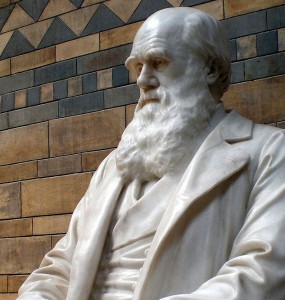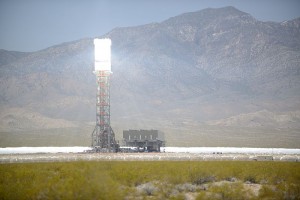
Darwin Day
February 12 was the 205th anniversary of the birth of Charles Darwin, and in recognition of that fact, here’s a little bit of good news: Evolution seems to be gaining ground in America. Sean B. Carroll over at Scientific American processed some of the recent Pew polling data and found something nice hidden in the data:
“The Pew researchers parsed the data not only by party affiliation, but by age. Those numbers were not only interesting but—dare I say it—encouraging. The 60 percent level of acceptance of human evolution includes all adults. But digging into particular age groups reveals that, whereas acceptance is significantly lower in adults older than 65 (49 percent), it is significantly higher in younger adults, between 18 and 29 (68 percent), with other age groups close to the national average.”
Also peculiar (but not entirely surprising) is the shift in the Republican-Democrat divide: where in 2009 the difference between the number of Republicans and Democrats who accepted the evidence for evolution as fairly conclusive was only about 10% — now it’s 24%, with 67% of Democrats and only 43% of Republicans siding with science over stone-age cult beliefs.
Chelyabinsk Meteor Update
For anyone wondering what scientists got up to after the news cycle ended, Richard Ingham over at phys.org has some details on the Chelyabinsk meteor. Among other things, scientists were able to back-track the meteor to its original location (in the asteroid belt), check its probable age (about 4.5 billion years), and drag a half-tonne “fragment” of it home for further study. There will be a session dedicated to research on it in Houston, Texas between March 17-21 at the yearly Lunar and Planetary Science Conference, after which I’m sure we’ll hear even more.
Spreading Deadlies
Slate reports this week that the world’s deadliest mushroom (the so-called “Death Cap” mushroom) is spreading (jumping hosts from European Oak to the Californian Coast Live Oak, as well as to certain species of North American pine. Even if treated, the results of poisoning by Death Cap can shut down the liver and kidneys and result in death, which is why the discovery of a new medication called silibinin, derived from the Milk Thistle, could save lives when it’s approved by the FDA. More on this story over at Slate.
Speaking of spreading threats, the mosquito-borne virus Chikungunya was detected in St. Martin in December, marking the first time the disease (originally from Africa, but now found in Eurasia) has made it to the Americas. On the plus side, it’s not usually deadly, and scientists are working as hard as they can to find a way to fight it. But we’re not there yet.
If you need some brain bleach after that news, here’s something else that’s spreading: tasty potatoes. At Penn State, Dr. Karl Zimmerer is working on preserving the biodiversity of the world’s potatoes (FYI there are over 5000 types of potato, and the US only grows 15 or so). Just don’t eat the green bits.
Renewables News

In solar news this week, Ivanpah, the three-tower, 300,000-mirror, 392-megawatt concentrated solar power plant went fully online Thursday. Located in just across the California border from Primm, NV, the Ivanpah Solar Electric Generating System, partially owned by (who else) Google, among other, should be able to provide enough power for something like 140,000 homes.
In other renewable energy news, a Stanford scientist, Professor Mark Jacobson, has announced the beginning of a 50-plans-for-50-states initiative as a roadmap for how to convert each and every state to 100% renewable energy. Here he is on the Late Show with David Letterman, explaining it in brief.
Supplement Supplemental
Regular readers will know that I’m not the biggest advocate of health supplements — many are known to have, at best, no evidence to support their claims, a fact to which the legalese statement “these statements have not been evaluated by the Food and Drug Administration” — found so often on their packaging — attests. Nevertheless, there is hope. This week Smithsonian has an article about five supplements that science suggest may actually be worth taking. The TL;DR is this: Vitamin D, “probiotics,” Zinc, Niacin (B3), and Garlic all seem to have positive effects in certain circumstances. Check out the article for what you really want: the reasons why.
Asteroid Wrangling
Finally, Gizmodo’s Sploid blog has an article this week on NASA’s plans to capture and return an asteroid to Earth, and why that’s a critical mission (in the long run) for humanities future.
Have a great week.
